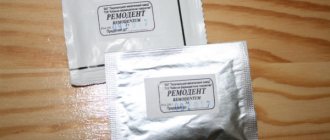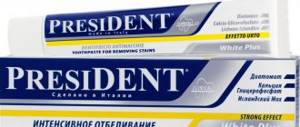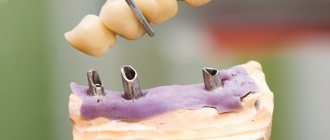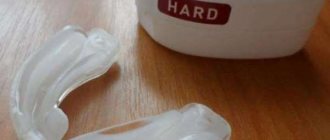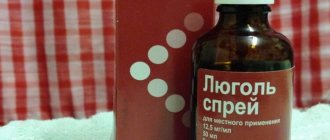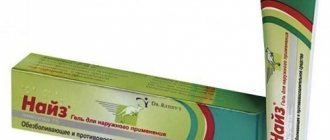Every woman at least once in her life has encountered gynecological problems and diseases that cause discomfort and sometimes put her in an awkward position.
But not many people know that these problems can be solved with the help of a drug such as Miramistin, which can be easily purchased at any pharmacy without a prescription form and for little money.
Pharmacological properties
Pharmacodynamics.
The active substance of the drug is miramistin, a cationic surfactant with an antimicrobial (antiseptic) effect.
The action is based on the direct hydrophobic interaction of the miramistin molecule with the lipids of the membranes of microorganisms, leading to their fragmentation and destruction.
It has a pronounced antimicrobial effect against gram-positive (Staphylococcus spp., Streptococcus spp., Streptococcus pneumonia) and gram-negative, aerobic and anaerobic bacteria, spore-forming and asporogenous bacteria in the form of monocultures and microbial associations, including hospital strains with multidrug resistance to antibiotics. Reveals an antifungal effect on ascomycetes (genus Aspergillus and genus Penicillium), yeast (Rhodotorula-rubra, Torulopsis gabrata) and yeast-like fungi (Candida albicans, Candida tropicalis, Candida krusei), dermatophytes (Trichophyton rubrum, Trichophyton mentagrophytes, Trichophyton verrucosum, Trichophyton schoenle ini, Trichophyton violacent, Epidermophyton Kaufman-Wolf, Epidermophyton floccosum, Microsporum gypseum, Microsporum canis), as well as other pathogenic fungi (for example, Pityrosporum orbiculare (Malassezia furfur)), in the form of monocultures and microbial associations, including fungal microflora with resistance to chemotherapeutic drugs means. Under the influence of miramistin, the resistance of microorganisms to antibiotics decreases.
At the site of application, it activates regeneration processes.
Thanks to its broad spectrum of antimicrobial action, miramistin effectively prevents infection of wounds and burns. The drug has pronounced hyperosmolar activity, as a result of which it stops wound and perifocal inflammation, absorbs purulent exudate and selectively dehydrates necrotic tissue, promoting the formation of a dry scab. At the same time, the ointment does not damage granulations and viable skin cells, and does not inhibit marginal epithelization.
Pharmacokinetics.
Due to the physicochemical properties of the ointment base, the drug acts not only on the superficial wound microflora, but also on pathogens located in the tissues surrounding the wound, which is why it is possible that a small part of Miramistin may enter the systemic bloodstream.
Miramistin in gynecology
Miramistin spray for feminine hygiene is used when treating the vagina and external genitalia in the presence of fungal or inflammatory infections. It is also effective against herpes virus, papilloma and human immunodeficiency. However, it must be noted that the effectiveness of the product extends to the early stages of infection, until the virus has penetrated the body’s cells. If the process has begun, prophylaxis with Miramistin will not help and more serious treatment will be needed.
If Miramistin is administered vaginally for dysbiosis and inflammatory diseases, the drug promotes faster healing of damaged mucous membranes and helps increase local immunity.
Miramistin cannot be used as an intimate hygiene product. It must be remembered that this is a drug and is intended for the treatment of infectious processes.
If you treat your vagina with it on an ongoing basis just like that, you risk disrupting the natural microflora of the vagina. This condition is called dysbiosis - the number of beneficial lactobacilli decreases and they no longer inhibit the growth and spread of opportunistic strains.
Methods of application
In gynecology, the antiseptic Miramistin is used for internal and external treatment of the genital organs. Miramistin suppositories are not produced, so a spray with a vaginal attachment is excellent for local treatment of candidiasis, vaginosis and vaginitis. And to treat the labia and skin in the intimate area, an antiseptic solution or ointment is usually used.
Miramistin is used to treat the vagina before childbirth, cesarean section and invasive interventions in the uterus to prevent the development of inflammatory processes. In order to prevent infectious complications of injuries and ruptures after childbirth, the drug is used for vaginal irrigation. After a caesarean section and surgical interventions in the uterus, the uterine cavity and incisions are treated using applications with tampons moistened with an antiseptic drug.
To use the spray in the intimate area, women need to use Miramistin with a gynecological attachment. The new bottle is opened by removing the cap, and an oblong vertical spray nozzle is attached to it. This sprayer is easier and more convenient to insert into the vagina.
You can douche with Miramistin solution at home using an Esmarch mug or a rubber syringe. However, the same douching with Miramistin in gynecology can be done using a conventional spray with a nebulizer. You cannot regularly douche with an antiseptic; for medicinal purposes this can only be done on the recommendation of a doctor.
Indications
Surgery, traumatology:
local treatment of infected wounds of different locations and etiologies, prevention of secondary infection of granulating wounds.
Combustiology:
treatment of burns of II and III A degrees; preparation of burn wounds for dermatoplasty.
Dermatology:
strepto-, staphyloderma, dermatomycosis of smooth skin, feet and large folds (including dyshidrotic forms and forms complicated by pyoderma), nails (onychomycosis), keratomycosis (including pityriasis versicolor), candidiasis of the skin and mucous membranes.
Prevention of complications of wound infection - in case of minor industrial and domestic injuries.
Prevention of STDs
Venereologists prefer the use of miramistin sprays for the prevention and treatment of sexually transmitted infections. The most common problems of unprotected sex include chlamydia, gonorrhea, trichomoniasis, syphilis, genital herpes, ureaplasmosis, genital herpes and others.
Miramistin for STDs is available in specialized packaging with attachments for internal treatment of the genitals. Men need to use a urological nebulizer to make an installation into the urethra. Women need to undergo 2 stages of the procedure.
First of all, you need to sanitize the vagina with an antiseptic. Then, using a urological nozzle, the product is injected into the urethra. The detailed dosage of the drug is indicated in the annotation. Be sure to read the nuances specified in the instructions before carrying out the preventive procedure.
Using a drug for the prevention of STIs after unprotected sexual intercourse with Miramistin solution, you can also treat the skin of the genitals, since in these places you also came into contact with a potentially infected partner.
It is important to remember that sexually transmitted infections are also transmitted through anal and oral sex. Accordingly, after such sexual intercourse, the anus and oral cavity should also be treated.
If infection is suspected, Miramistin should be administered no later than 2 hours after sex.
Application Features
The effectiveness of the drug increases if the ointment is applied to the wound surface, previously washed with an aseptic solution.
The presence of purulent-necrotic masses in the wound requires additional use of ointment.
Use during pregnancy or breastfeeding.
Due to the lack of sufficient experience, you should consult your doctor before using the drug during pregnancy or breastfeeding.
The ability to influence the reaction rate when driving vehicles or other mechanisms.
The drug does not affect the reaction rate when driving vehicles or other mechanisms.
Contraindications
According to doctors, Miramistin ointment is safe for most patients. The only absolute contraindication is the presence of allergies or individual intolerance to the components of the drug. The medication should not be used in the treatment of children under 3 years of age.
The drug has been registered and used for the treatment of diseases relatively recently. In this regard, there are no studies of its safety when used during pregnancy and breastfeeding. Miramistin should not be used during these periods unless the possible benefits outweigh the risks.
Miramistin should not be used in children under 3 years of age.
Directions for use and doses
The drug should be used topically for adults.
Treatment of wounds and burns.
After standard treatment of wounds and burns, apply the medicine directly to the affected surface, then apply a sterile gauze bandage or apply ointment to the dressing material and then to the wound.
You can also use tampons soaked in the drug, carefully filling the cavities of purulent wounds after surgical treatment, or gauze turundas with ointment, introducing them into the fistula tracts.
Use the drug once a day in the treatment of purulent wounds and burns in the 1st phase of the wound process and once every 1–3 days in the 2nd phase, depending on the condition of the wound. The dose depends on the area of the wound surface and the degree of purulent exudation. The duration of treatment is determined by the dynamics of wound cleansing and healing. If the infection is deeply localized in the soft tissues, it is possible to use the drug together with systemic antibiotics, and the duration of treatment will be determined by the duration of the antibiotic course.
Treatment of dermatological diseases.
Apply the medicine in a thin layer to the damaged areas of the skin or apply the ointment to the dressing material, and then to the lesion 1-2 times a day. Duration of treatment: use the drug until negative results of microbiological control are obtained. For common dermatomycosis, in particular rubromycosis, the ointment can be used for 5–6 weeks in complex therapy with griseofulvin or systemic antifungal drugs. For fungal nail infections, the nail plates should be peeled off before starting treatment.
Children.
Due to the lack of sufficient experience, the drug should not be used in pediatric practice.
Side effects
When using the ointment daily, the daily dose of the drug should not exceed 100 g.
Miramistin is as effective as it is allergic
With a higher dosage, side effects may develop: mild burning, itching and redness of the skin or mucous membrane at the site of application.
No specific treatment is required. The symptoms go away on their own when the medication is stopped.
Miramistin can cause allergic reactions of varying severity - from swelling and slight itching to Quincke's edema and anaphylactic shock. Depending on the allergy symptoms, the patient needs to use antihistamines or hospitalization.
Overdose
No overdose phenomena were observed. However, when applying the drug to large surfaces of the affected skin, the possibility of partial penetration of the active components of the ointment into the systemic bloodstream in quantities not capable of causing acute poisoning cannot be excluded. The systemic effect of miramistin manifests itself as the action of a cationic detergent and can prolong bleeding time.
Treatment: dose reduction or discontinuation of the drug, administration of oral calcium supplements, Vikasol.
Miramistin in urology
In urology, antiseptics are used no less often than in gynecology. Urologists prescribe Miramistin for cystitis, urethritis, balanoposthitis and other acute and chronic infections of the genitourinary system. The drug is often part of a therapeutic complex. They do this to increase the pathogen’s susceptibility to antibiotics and speed up recovery.
To prevent infectious complications, Miramistin is also injected into the urethra during diagnostic procedures and surgical interventions.
Methods of application
An antiseptic is injected locally into the urethra. To inject Miramistin into the urethra of men, use a urological applicator.
You must follow the dosage prescribed by your doctor, otherwise you risk getting burned.
How many times a day you need to do the procedure and the dose of the drug is prescribed by the urologist.
If you have to use the drug urgently before visiting a doctor, follow the recommendations contained in the instructions.
The leading positions among male sexually transmitted infections are occupied by sexually transmitted diseases. Urologists often treat STIs in men. Miramistin does not treat sexually transmitted diseases, but is very effective in preventing them. They can replace Chlorhexidine. The drug is also injected into the urethra within 2 hours after intercourse.
In addition to installing Miramistin into the urethra, after unprotected sexual intercourse, men should treat the head of the penis and the skin of the genitals with an antiseptic.
Precautionary measures
To avoid undesirable consequences, the drug must be used in compliance with certain rules. In case of individual intolerance to the components of the medicine, its use for intimate hygiene and treatment of various diseases is strictly prohibited. Otherwise, complications may occur that manifest themselves in the form of allergic reactions.
If after carrying out hygienic procedures a burning sensation is observed in the perineal area, then it is necessary to urgently rinse with clean water. In the future, the use of the drug for intimate hygiene is prohibited.



